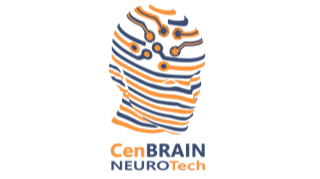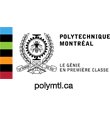
Mohamad Sawan
M.Sc., Ph.D., FIEEE, FRSC, FCAE, FEIC, O.Q., Chair Professor, Westlake University, and Emeritus Professor, Polytechnique Montréal.
- Founder and Director of the Cutting-Edge Net of Biomedical Research and Innovation (2019-…)
- Chair Professor in the School of Engineering, Westlake University (2018-…)
- Tier 1 Canada Research Chair on Smart Medical Devices(2001-2015)
- Director of the Microsystems Research Alliance on Smart Medical Devices(1999-2019)
- Founder and Director of the Polystim Neurotechnologies Laboratory(1994-…)
1. I received my Ph.D. in Microelectronics Biomedical in 1990. I am the holder of a Tier 1 Canada Research Chair in Smart Medical Devices. I lead the Microsystems Strategic Alliance of Quebec (Regroupementstratégiqueenmicrosystèmes du Québec – ReSMiQ). I am the founder of many international scientific committees and meetings such as the Montreal IEEE-Solid State Circuits Society Chapter and the IEEE International New Circuits and Systems (NEWCAS). I am the cofounder of the International Functional Electrical Stimulation Society and of the IEEE conference on Biomedical Circuits and Systems (BIOCAS). I also am the founder of the Polystimneurotechnologies laboratory (Polystim) at Polytechnique Montréal, and the Cutting-Edge Net of Biomedical Research and Innovation (CenBRAIN) at Westlake Universityin Hangzhou, China.
2. I have a distinguished record of scholarships and have shown outstanding academic leadership in biomedical engineering, particularly in the field of implantable bionics. The list of scholarships as well as national and international awards is shown in previous part of this Curriculum Vitae (pages 2-4);
3. I have contributed to a large number of publications in biomedical engineering, particularly implantable bionics. My list of contributions as principal author and co-author with my students includes more than 600 scientific publications in peer reviewed prestigious scientific journals and conferences, and I have been awarded 10 patents (Appendix C);
4. I have developed and managed strong relationships and collaborations with the international medical device industry and have a strong record of successful interactions with professional organizations. In fact, I have contributed to the development of several technologies with several companies including Cochlear (Australia) and Medtronic (USA). But finally, my discoveries (see list of patents in my resume) were awarded to a Canadian Company (Victhom Human Bionics). I have received financial support and carried out R&D contracts with several local and international companies including Telemedic, Scanview, Kyvox, Bombardier, Thales, Astrium, Airbus, etc. (Appendix E);
5. I have demonstrated a significant record of excellent achievement in teaching, courseware development and supervision at both the undergraduate and graduate levels. I have supervised and co-supervised the Ph.D. theses of more than 50 candidates, 39 of them completed their theses and half of them are holding academic positions in various universities around the world. Five others are completing their degree this year. Also, over 100 candidates have completed their master’s thesis and more than 200 undergraduate students have completed their final year project in my laboratory and under my supervision. I also supervised the research project of more than 30 postdoctoral fellows and research assistants (Appendix D);
6. Over the years, I have also acquired and managed two major research infrastructures and attract significant operating funds (more than 45 M$) from both the federal and provincial governments. My projects also frequently involve the financial support of an industrial collaborator (Appendix F);
7. I have demonstrated a record of achievement in academic administration both in my main institution and through 9 others where I am heading a multi-university research center (Appendix B).
Summary of accomplishments
I have made outstanding contributions in bridging microelectronics into biomedical engineering to build smart medical devices dedicated to improving the quality of human life. For more than a decade his research has been directed towards designing and building wireless implantable microsystems to restore lost sensory ability or functions of body organs through monitoring and low-current stimulation. The medical applications of these microsystems have won me worldwide visibility and recognition and multiple honors and awards. I was elected a Fellow of the Canadian Academy of Engineering, the most prestigious honor aspired to by Canadian engineering researchers, and a Fellow of the IEEE, the most prestigious honor aspired to by worldwide electrical engineers. I was awarded the Medal of Honor from the President of Lebanon for my outstanding achievements, the ACFAS – J. A. Bombardier Award for research innovation and technology transfer, and the ACFAS – Jacques-Rousseau Award for multidisciplinary research activities. More recently, I received the Polytechnique Award for research and innovation, the most prestigious honor offered by Polytechnique Montreal to a faculty for his numerous research activities and achievements.
My team project dealing with visual cortical stimulation was selected as one of Québec’s top 10 inventions in 2000 by Quebec Science magazine. This project has received national and international recognition both in the technical literature and in the popular press and broadcast media. It has been widely reported by news media, such as major Canadian and international TV networks. This project was also cited as a technical breakthrough by many national and international authorities and research agencies. In addition, my project dealing with a bladder controller, which aims at recovering two essential functions (urinary retention and voiding) in spinal-cord injured patients, won the Barbara Turnbull award, one of the most prestigious awards in biomedical research in Canada. This project is one of his most significant contributions. Several versions of these implantable devices have been proposed, assembled, packaged, and tested in vivo. In addition, licenses of three of my research projects were awarded to local companies for testing on human subjects, and subsequent introduction on the market.
We proposed an implantable microdevice intended to onset detect the epileptic seizures and to subsequently stop them through electrical direct stimulation. Two main versions were proposed in order to improve the detection performance. These implants are a pioneering work and are used as reference for most emerging seizure detectors. More recently, we developed microsystem-based architectures intended to build brain-machine interfaces for monitoring the interconnections between cells through neurotransmitters. We proposed lab-on-chip based biosensors using Dielectrophoresis and Magnetophoresis techniques to manipulate ions and characterize them through capacitor and ISFET sensors. These microdevices were validated using several types of cultured neural cells and other artificial bioassays. Several national awards were received for these contributions. My research efforts therefore have far-reaching implications for neurological disorders, and injuries of the spinal cord and nervous system. Most of these devices have been evaluated in vivo in collaboration with various surgeons.
My team research results have been widely cited in the scientific literature. Our innovations are based on novel circuit techniques covering a wide range of microelectronic building blocks. Most of the medical devices I have proposed have had a great influence on recent neurostimulation system architectures. Several companies and research teams have adopted some of these systems and techniques in their own research programs. I was the first to design, construct and package implantable selective micro-stimulators, to propose remote measurement techniques integrated in one chip, to achieve full-duplex data transmission of remotely powered devices, and to propose on-chip integrated electroneurogram measurement techniques to evaluate the volume of the bladder.
More recently our work on improving the power harvesting methods to transmit to implants was in the spotlight of the IEEE Xplore data base, and one of the most downloaded papers. In all these designs, a special attention was given to optimizing energy consumption and occupancy of small physical dimensions without compromising on reliability and flexibility. Also, I have made pioneering contributions in modeling the effect of propagated energy during the electromagnetic link and its effects on tissues. In most of these medical applications, I have played a crucial role in successfully conducting in vivo tests on animals and validating the applied stimulation and measurement techniques.




